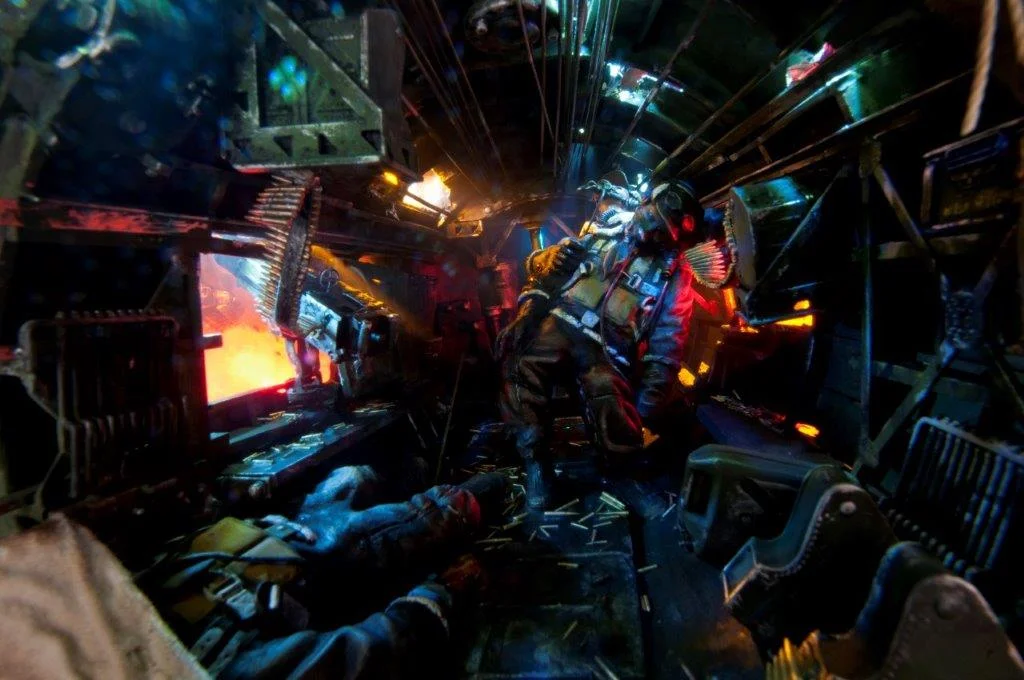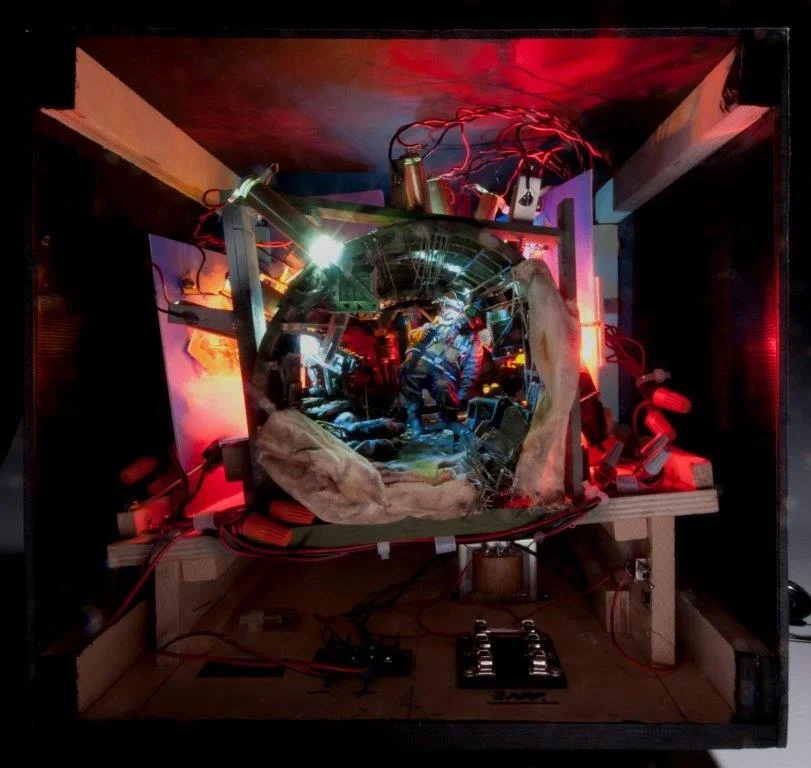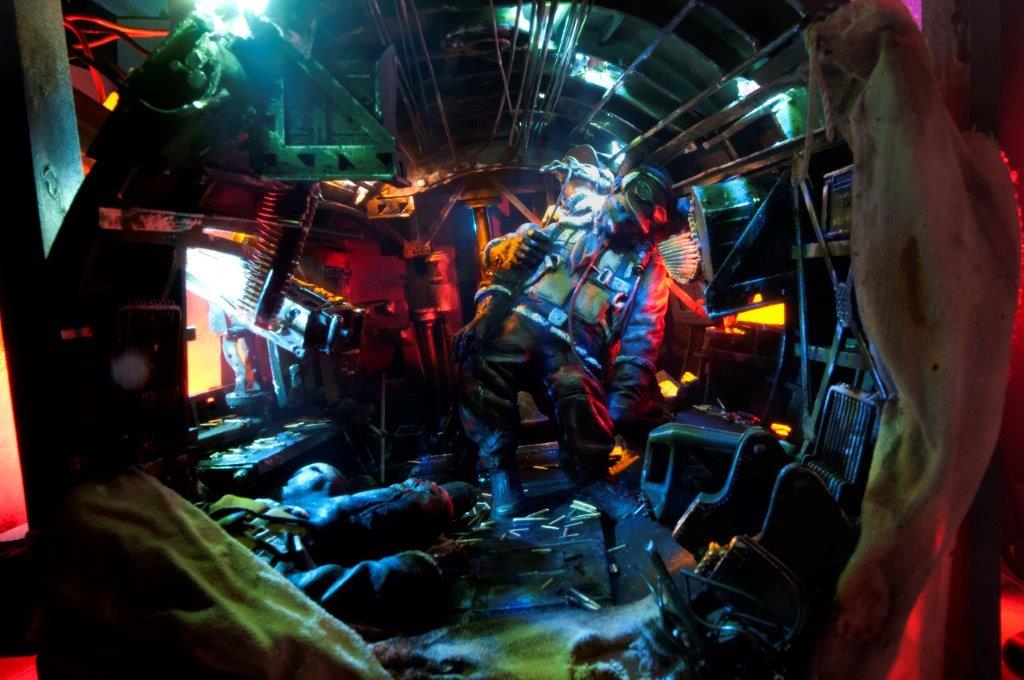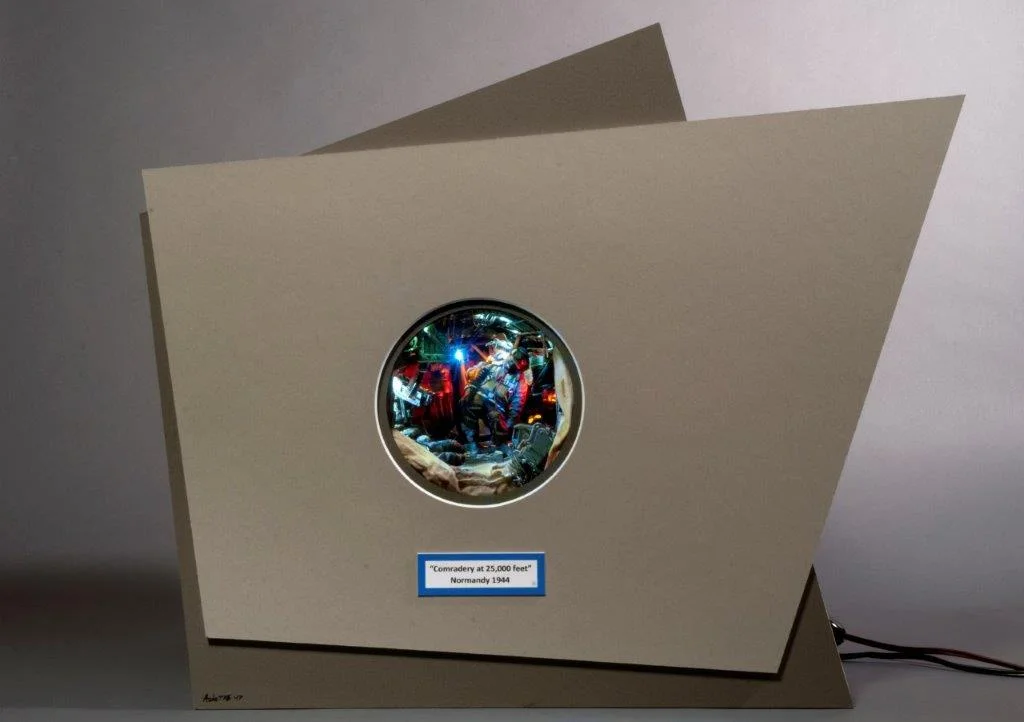“Comradery at 25,000 feet” Normandy 1944
By Darryl Audette
A while ago I was asked to contribute an art aviation piece to the Annual Auction of the Royal Aviation Museum, but at the time because of prior commitments and returning back to University, had to be put on the back burner for a bit. Although I knew from the very beginning it had to be some form of homage to Larry Burrows and his iconic April 16, 1965 Life Magazine cover, “One Ride with Yankee Papa 13.”
Also, being destined for a museum, I decided to finally jump completely in and use LED’s to light the entire scene. I’ve used them before here and there a little, but never to supply all the lighting.
The project began with the classic Verlinden 120mm scale “B-17 Waist Gunner” vignette model kit, and months of research, my favorite part.
We’re used to seeing footage of the exterior of B-17’s and other airplanes in the thick of battle, but rarely do we see interior images of what the crew are going through, so that’s what I wanted to portray: the human condition.
The concept formed to showing two B-17 waist gunners caught in full air combat, with one being wounded, caught by his comrade with a third lying wounded on the deck leading us into the scene.
I treated this project as I do most of my models, that being an exercise and challenge in spatial design and lighting.
So, after researching the interior of the plane, its functions, details, etc., most of the interior had to be scratch built, mostly using a favorite method used by Shep Paine called “Creative Gizmology,” which is creating the impression of what you want the audience to see without actually making everything. I find this more creatively challenging, and exciting than actually making something exactly as the original.
The tight quarters and all the details that needed to be portrayed were made from plastic, metal, resin, and lots of spare parts that have been gathered over the years.
The three figures began as Verlinden stock 120mm figures, which were cut apart, converted, reanimated, then re-sculpted, pained in acrylics, gouache, enamels and mostly oils. The plane interior was completely airbrushed with enamel washes, and detailed with acrylic and gouache paints.
Now the lighting, because it was going to a museum, it had to be powered by reliable AC current, so all the 12 volt LED’s were connected in parallel to a 12 Volt transformer mounted on the inside of the outer case. I sourced out 12volt automotive replacement bulbs of various colors (clear, amber, red) various sizes, and various intensities.
Originally, I experimented with LED strip lights, but they didn’t give the look I wanted, that being of bright “sunlight” streaming through every bullet hole, flak hole, and parts of the fuselage that have been blown away, as well as the look of combat fires outside the gun ports. Many of these LED’s were held in mini bayonet sockets and the bulb inserted in a small length of brass tube to focus and intensity the light through each hole made in the plane, another Shep Paine innovation.
Once all the bulbs were placed and focused, I added red and clear spun fiber glass to cover some of them to simulate the look of guns firing, explosions. A few of the lights were refocused to high light the figures. Then I added enemy plane pictures outside the gun windows, scatterings of empty shell casings, oil, etc. to flesh out the scene and tell the story more.
After showing the completed and framed scene to some friends, they commented it had the look of Combat Comics they read as a teenager, and as well a Shep Paine feel to it. I couldn’t ask for better comments.
I dedicate this piece to the memory of two great artists, Larry Burrows and Sheperd Paine.



